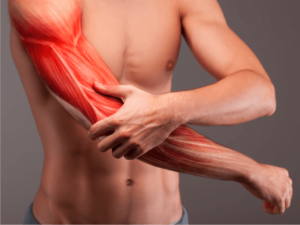What is Osteoarthritis?
Osteoarthritis (OA) is a joint disease that mostly plagues elderly people, but can occur in younger people as a result of joint injuries. It is the most common type of arthritis. The disease targets only your joints, through the loss of cartilage.
Cartilage is the tissue that covers the ends of your bones. The tissue is necessary to absorb the shock of your movements. Over time your cartilage wears away, and your bones no longer have the protective barrier to keep them from rubbing together. This kind of bone contact causes swelling, pain, and even loss of motion.
In the most severe occurrences, parts of bone or cartilage can break off and float around the joint space. Factors that increase your chances of getting OA include genetics, obesity, previous joint injuries, and joint deformities such as bowlegs. If you experience stiffness during everyday tasks, swelling of joints, or the sound of bones rubbing, you might want to consult with your doctor.
Quick Facts on Osteoarthritis
• People with OA risk falls 30 per cent more than the average person.
• People with OA have a 20 per cent higher chance of getting a fracture.
• Untreated, OA can make the simplest tasks, such as opening a box, nearly impossible.
• Most OA patients will not need surgery.
• No treatment to reverse OA damage has been discovered yet.
Treatments for Osteoarthritis
Most treatments for OA are a change in lifestyle.
• Exercise.
• Weight control.
• Joint care.
• Non-drug pain relief techniques.
These lifestyle improvements are part of doctor-patient programs to work through osteoarthritic pain. Weight loss and exercise are deemed particularly useful, as they reduce strain on your joints.
While lifestyle changes are essential, drug treatments are something you can discuss with your doctor. OA drugs come in both oral and topical forms.
Topical can be applied to the aching joints. Oral drugs are generally anti- inflammatory treatments to reduce swelling and pain.
The most severe cases of OA can require surgery. Doctors will recommend this route if the damage is serious or the patient has suffered major loss of function.
Vitamin supplements, such as calcium, vitamin D and omega-3, are commonly used as a treatment for OA. There are other over the-counter supplements.
However, there is little research to back up their effectiveness.
Alternative or Complementary Treatments
Combining OA treatments and approaches can lead to more fruitful results in pain management. The American College of Rheumatology and the American Academy of Orthopedic Surgeons have issued complementary approaches to treating OA.
• ACR conditionally recommends tai chi for OA in the knees.
• ACR recommends acupuncture only for OA cases that are knee replacement candidates, but cannot receive the procedure. AAOS, however, recommends against it so speak to your doctor.











